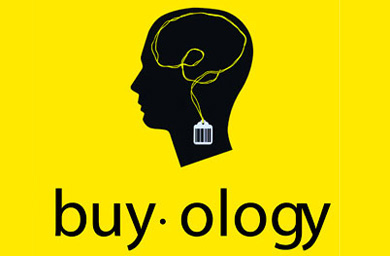Answer

Aug 28, 2019 - 08:08 AM

Buyology is (as the author tells us straight away in the introduction) a book about neuromarketing. Published in 2008, Buyology appeared just at the moment when the neuromarketing fervor was starting to die down. Over a decade later, almost no one talks about neuromarketing anymore.
That’s because neuromarketing, interesting though it is, never provided the concrete answers that researchers were hoping it would. In fact, the results of neuromarketing research have even steered some brands seriously wrong, such as when Campbell’s decided to redesign its iconic soup can based on neuromarketing research.
But in spite of the drawbacks of neuromarketing, does Buyology still offer any useful insights that can be applied today?
The book opens with a tale of a neuromarketing study that’s admittedly interesting. The study found that warning labels on cigarette packs didn’t actually deter subjects from smoking. Instead, a brain scan found that viewing the warning labels stimulated the part of the brain associated with cravings, in a surprising Pavlovian response.
Although fascinating, that study also highlights the primary reason neuromarketing fell out of style: it never provided any hard answers researchers could use. Neuromarketing can give insight into how consumers respond to stimuli. But it can’t prove anything more precise than that. And it never revealed how to trigger a “buy button” in the brain that would lead to a surefire purchase, as neuromarketing enthusiasts once hoped it would.
Author Martin Lindstrom goes on to discuss many more neuromarketing studies, all with similarly interesting-but-not-life-changing results. The studies may be fun to read about, but they don’t offer much in the way of applicable truths that advertisers can use.
Lindstrom also turns many of the studies into long, slightly rambling anecdotes. It’s probably an effort to make the book more entertaining, but for someone looking to get to the core of the neuromarketing question, it can make the book feel like a slog.
Lindstrom even (perhaps inadvertently) writes a few things that paint neuromarketing in a negative light. Many consumers already aren’t too comfortable with the idea that brands will probe their brains to get results, and Lindstrom makes some statements that might make skeptics even more concerned.

For example, he suggests that politicians could make political ads that use neuromarketing for the express purpose of “playing on voters’ fear” to get results. While political ads that hinge on fear surely work, they also come with concerning moral repercussions, since strong emotions like fear often drive people to make unwise choices. We’re all familiar with fear-mongering in politics, but few people outright support it.
Lindstrom also suggests that Hollywood could use neuromarketing to produce films designed to please, summing up the idea with, “So if you think films are formulaic now, fasten your seatbelts for Rocky 52.” While filmmakers might be excited at the idea of using neuromarketing to make formulaic moneymakers, it’s hard to imagine anyone else wanting to sacrifice the film world’s potential creativity and risktaking for profits.

Image via Pixabay
Lindstrom goes on to describe a neuromarketing study of his own, in which he found that consumers recalled product placement during a show better than they recalled a traditional ad that ran during the same show. (This section is flanked by a long and needless description of product placement throughout history.)
Lindstrom interprets the findings to mean that products are more memorable when they “play an integral part in the storyline of a program.” However, there’s nothing in the research to suggest that this interpretation is the correct one. There could be many other reasons viewers recalled one product over another. Here, Lindstrom inadvertently highlights the issue with neuromarketing once more: it leaves so much room for interpretation as to be virtually useless.
Throughout the book, Lindstrom continues to show neuromarketing’s limitations as he tries to defend it. He devotes an entire chapter to the concept of “mirror neurons,” which help push us to copy others’ behavior: hardly a groundbreaking insight. We often buy things simply because we’ve seen other people with those things. We don’t really need neuromarketing to tell us that.
Of course, there is value in understanding more about how the brain works. It’s good that researchers have discovered that mirror neurons are behind a well-known phenomenon.
However, that information doesn’t really help someone who is trying to make better advertisements - and Buyology, on the whole, also won’t help someone who is trying to make better advertisements.
The studies Lindstrom highlights may help you understand the brain processes behind common consumer behavior, but they won’t help you design better ads.
Lindstrom does offer one study that seems more useful than the rest, in which neuromarketing appeared to successfully predict how well a television show would be received.
However, in light of other high-profile neuromarketing flops (like the Campbell’s example mentioned above), the study is less compelling. Neuromarketing can work well sometimes, but it can also lead to expensive failures. That gamble isn’t worth it for most brands.
It is also interesting that, near the end of the book, Lindstrom successfully predicts the rise of the personal brand, which we see everywhere today in the form of things like influencer marketing.
Although he doesn’t make the connection outright, neuromarketing can surely explain why this type of advertising works so well (it probably has something to do with mirror neurons). However, in the end, advertisers don’t really need to know why certain techniques work - they just need to know that they do.

Image via Pixabay
In his conclusion, Lindstrom states that he hopes his book helps consumers better understand what drives them to make a purchase. He suggests that with this information, “we, the consumers, can escape all the tricks and traps that companies use to seduce us to their products and get us to buy and take back our rational minds.”
But most of his book actually seems aimed at helping advertisers better create those tricks and traps. The idea that Buyology is meant to help consumers instead of marketers rings false. The book also likely won’t be that interesting to someone who doesn’t work with marketing.
If you want to understand the psychology behind why popular advertising techniques work (like appeals to the senses), you might enjoy Buyology. But if you want to know how to create more effective ads, Buyology (and neuromarketing on the whole) probably isn’t worth your time.
Plus, with its many anecdotal asides and philosophical musings, Buyology offers a very slow way to get information that’s not all that helpful. It may be interesting to understand what neuroscience can explain about marketing. But you can also employ well-known marketing techniques just as successfully, without knowing the neuroscientific reasons why they work so well.






Add New Comment